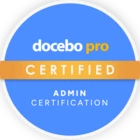What are the benefits of overwriting a training material vs. hiding them (Specifically SCORM files)? I thought it was so in-progress users could continue taking the hidden training materials, while the visible ones were shown the active training materials (slowly phasing out), but that doesn’t appear to be the case. Is it just cleaner to overwrite? Does overwriting cause any issues aside from making in-progress users start over? I’ve always been so nervous with this.
Question
Benefits of overwriting vs. hiding training materials
Log in to Docebo Community
Enter your email address or username and password below to log in to Docebo Community. No account yet? Create an account
Docebo Employee Login
or
Enter your E-mail address. We'll send you an e-mail with instructions to reset your password.






